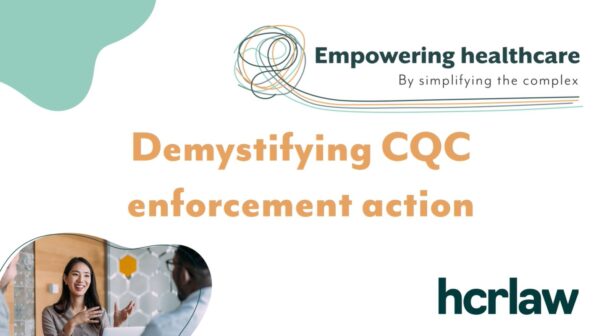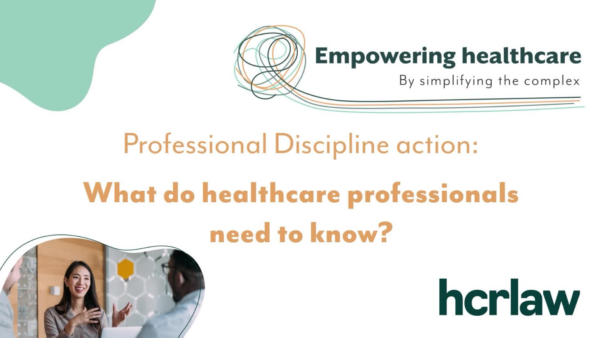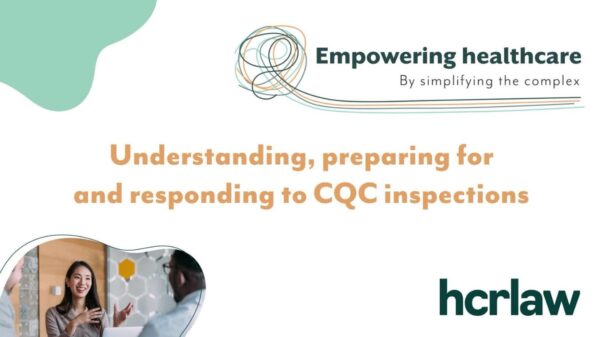

We highlight various practices issues which has crossed over our desks recently. It is important that providers are aware of detailed practice developments and be prepared in advance of Care Quality Commission (CQC) assessments and inspections.
Assessment/Inspection
We are starting to see the practical application of the new CQC assessment framework. CQC have changed the language relating to their view and judgement of individual care services.
Regulation has traditionally been based around a CQC led detailed inspection of a service with physical visits as its centrepiece. CQC are given extensive powers of entry and to require information in various forms to support their conclusions. This includes requiring information and interviewing staff engaged in the service. The powers are set out in detail in statute. An inspection must be followed by a written report and that report must be published. In recent years such reports have included the regulators “rating” of the service. Negative ratings clearly have a significant adverse commercial impact on the service inspected. Broadly, the reports have grown to give reasonable detail to enable providers to understand and respond to adverse criticism.
“Ratings” were introduced by the 2014 Care Act which required the CQC to “assess” regulated services but left CQC to determine the method and external publication of the results of assessment. CQC chose to adopt a “Ratings” system. CQC has full control of the methodology of the assessment and how results are communicated. The “assessment” process places much lower expectation on CQC by way of identification of evidence to support the basis for the conclusions which it draws. The conclusions however can, and, are being communicated externally with increasingly less detail than that to which providers have become accustomed. With the new framework “assessment” will increasingly be based upon information generated by the providers themselves. CQC encourage the supply of such information online through posts upon the providers CQC “portal”.
- This will include posts by individuals reporting feedback on the “portal”
- The outline of assessment findings will be posted by the CQC
- The providers are all able to and encouraged to post proactively to keep their public image and perception dynamic and current.
This is a change of emphasis. Historically providers have waited for and reacted to interventions by the CQC.
Now the CQC will operate very largely on by way of regular information updates or reaction on what is initiated by the provider whether by way of regular information updates or reaction to what others say and post. This change is most significant. Judgements will be made by customers, potential customers, commissioners, and other stakeholders on the basis of what appears online.
This is an opportunity as well as a potential threat. Providers should embrace the opportunity. Increasingly what is posted, online, on the provider “portal” will be seen as an accurate perception of the state of a particular service. Providers should:
- Establish resources to monitor information on the “portal”. CQC will not necessarily notify providers. They will expect providers to be aware of the current state of the “portal” which will be continuously updated
- Proactively update the “portal” with all relevant information; respond to experience posts (negative and positive); encourage happy customers to post positively, but make sure that provider posts are wholly accurate
- Try to pre-empt CQC posts following visits, whether assessment or inspection.
This will add expense in time and cost but following these simple steps will support the service in getting the message about the success and service offering availability.
In addition, remember that CQC’s extensive powers flow from the conduct of “inspections”. Whilst we would always encourage providers to welcome CQC as the regulator, it is worth asking the inspectors whether any visit is an inspection or not. If not conducting an “inspection”, the extensive statutory powers do not apply and it will be possible more effectively to manage the regulator visit than when they are attending supported by these full statutory powers. If “Inspection” is not confirmed then providers are in a position to resist the more intrusive and disruptive conduct of the inspectors.
We are here to help providers draft and manage the information flow to the “portal” and other communications to the CQC. Where evidence is required or more detail is needed, than can easily fit the “portal” providers may still deliver by email or other submissions and representations directly to the inspectors and the CQC Head Office.










